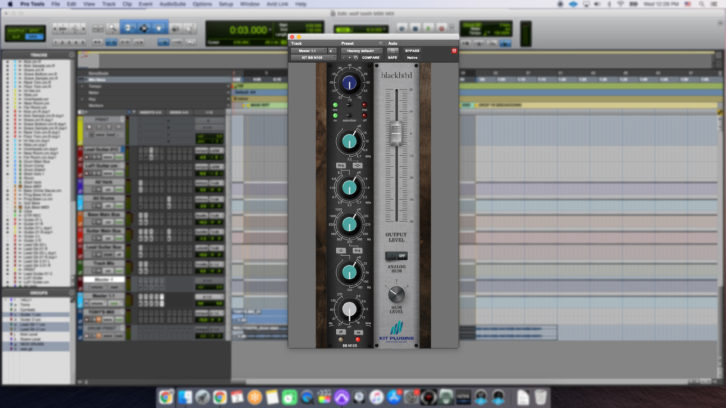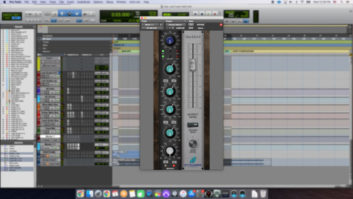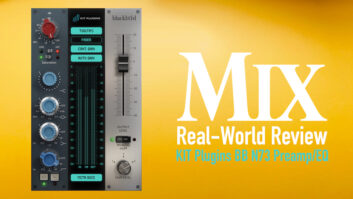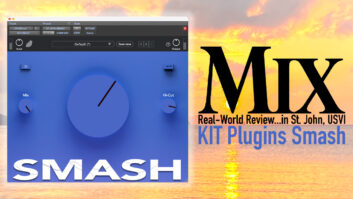
There are at least a dozen plug-in emulations of classic Neve consoles available today, and while some are sonically closer to the hardware than others, often the developers appear to have spent more time making sure their plug-in looks like the original rather than sounds like it. Enter KIT Plugins and the extraordinary BB N105, now in V2. This plug-in sets a new bar in classic console emulation.
The timeless Neve 8078 was the last of the Neve 80 Series hand-wired consoles, and while its 31105 EQ module is not as popular as the 1073, 1081 or even the 31102 that is found in the 8068 desk, it is revered by many as the ultimate recording console.
Studio A at Nashville’s renowned Blackbird Studio features one of only a handful of 8078 consoles still in use today. Originally built for Motown Records, it was later Donald Fagen’s console for many years before being purchased by Blackbird owner John McBride in 2002. Since its purchase, the console has been restored and modified, and is now one of the top draws of the world-class facility.
When KIT Plugins decided to make a channel plug-in, it opted to model what is arguably not just the best-sounding console series, but due to its thorough restoration and modifications, what is likely one of the best-sounding consoles in existence today. Beyond the sound and performance of the 31105 module, the KIT Plugins modeling process incorporates the sound of the Blackbird 8078’s “Master Bus B” fed into Burl A/D converters.
UP AND DOWN THE STRIP
The BB N105 features a line/preamp section that includes preamp gain, a switch to select between line and mic input, and a switch to turn saturation on or off. There are four bands of EQ, along with highpass and lowpass filters.
The High and Low bands each have five frequency options and are selectable between shelving and peak. The high-mid and low-mid bands each have 10 frequency options, as well as a Hi-Q option. Phase invert and EQ in/out switches are also provided, as is as an output fader. The plugin comes in VST3, AU and AAX versions.
Maestro Original Collection – A Real-World Review
As a workhorse, the BB N105 is wonderful. I’ve been using it as my go-to channel strip for months now and it never disappoints. I have found that when I mix, using a 3-band EQ often requires the use of an additional EQ plug-in to yield the desired sonic result, so I love having the BB N105’s four bands at my fingertips.
As would be expected from a Neve module, the plug-in is ultra-musical. A smooth high-end, punchy mids, and a rich, full bottom make it perfectly suited for any sound source. The N105 turns drums into virtual putty, making it easy to mold and shape their sonic character into what the song needs. The plug-in works wonders on electric guitars and is perfectly suited for piano and acoustic instruments. During a recent mix, I added a significant amount of high-frequency gain to a dark vocal, resulting in a pristine, sparkling top end that wasn’t brittle or harsh.
COMPRESSION, SATURATION
The flexibility yielded by the EQ is just the beginning of the BB N105. Where it really shines is when you switch to mic input and start driving the preamp. Pushing it with the saturation switched off adds harmonic content and subtle compression. This is fantastic with acoustic instruments and vocals, as it allows them to pop out of the mix without becoming overpowering. They’re still sitting in the same place in the mix; they just speak better.
Better yet, turn the preamp saturation on and the possibilities are endless. Drums go from a subtle compression of rounding off the transients to extreme saturation where they take on an entirely different sonic shape. When I mixed on analog desks, I rarely compressed drums, but since I moved to mixing in the box, I almost always find myself compressing every drum mic. The BB N105 takes me back to the analog days: The saturation provided by the plug-in has eliminated my need for compression.
Of course, driving the mic input harder increases the channel’s gain. The Auto-gain setting will automatically ride the output fader down as you increase the mic gain, allowing the track to remain the same level while dialing in the exact right amount of saturation. The mic input is adjustable in 5 dB increments (like the console), but users who need more precise input control can switch to the continuous mode for subtle mic gain changes. The plug-in supports resizing, making it easy to have multiple instances of the plug-ins open simultaneously.
The fader colors on the plug-in can be changed (black, silver, blue or red), so you can easily navigate through plug-in instances assigned to various sound sources (red for drums, blue for guitars, silver for vocals, etc.). This doesn’t sound necessary at first, but you’ll be surprised at how quickly this will become one of your go-to plug-ins. My last mix included 25 instances of the BB N105!
A NO-BRAINER
The plug-in’s analog hum option is a nice addition. Adding hum doesn’t necessarily sound logical to a mix engineer, but it’s amazing how adding a slight amount of hum across all the drum channels creates a sonic glue that makes the entire kit work together.
KIT Plugins has also provided the ability to adjust between three different oversampling rates to provide superior sound definition or to provide a lighter CPU load.
The BB N105 is the ultimate DAW channel. It is quick and easy to use. It’s musical. It’s extremely flexible, and it’s creative as hell. With a current price tag of $99, you’d be foolish not to make it the next addition to your plug-in arsenal. I can’t wait to see what’s next for KIT Plugins!
Nashville-based Russ Long has been producing, engineering and mixing music for more than three decades. He spends the bulk of his time working in his Dangerland mix room where he also does console R&D for Yamaha.







